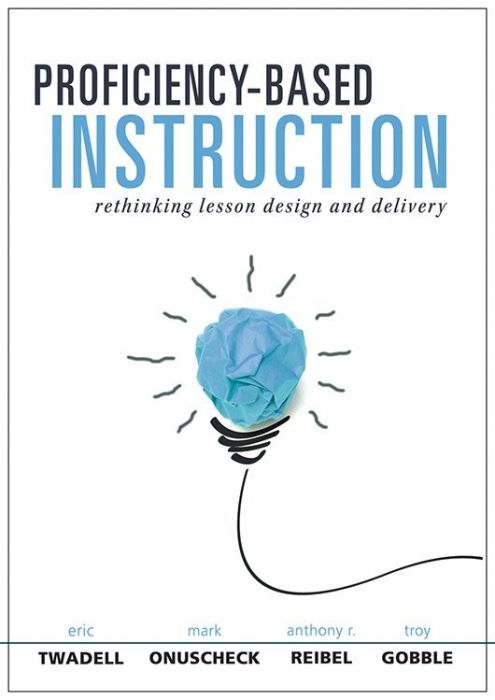
Proficiency-Based Instruction
Rethinking Lesson Design and Delivery
Gain a clear five-step process for fully and seamlessly transitioning to proficiency-based instruction (also known as evidence-based grading). Drive student self-efficacy and achievement with lesson and curriculum planning that focuses on real learning.
Your Implementation Strategy for Proficiency-Based Instruction
Only by shifting away from a one-size-fits-all approach to teaching and learning can every student achieve self-efficacy and true success in the classroom. In this resource, authors Eric Twadell, Mark Onuscheck, Anthony R. Reibel, and Troy Gobble provide educators with a comprehensive strategy implementation process for proficiency-based instruction. Readers will gain a clear five-step change management process for seamlessly transitioning to a new, improved model of instruction and curriculum planning in which individual student self-efficacy and growth come first.
Use this implementation strategy to transition to a proficiency-based instruction model for student self-efficacy:
- Learn the benefits of switching from traditional instruction to proficiency-based instruction (also known as evidence-based grading).
- Explore the process, concepts, and supporting pedagogy of proficiency-based instruction and curriculum planning.
- Acquire a five-step implementation strategy: (1) preparation, (2) incubation, (3) insight, (4) evaluation, and (5) elaboration.
- Gain change-management tools for carrying out each of the five steps as a collaborative team and onboarding all stakeholders in curriculum implementation.
- Discover how one collaborative team successfully worked together to implement proficiency-based instruction and plan lessons.
- Access free, online reproducibles that will support your shift to proficiency-based instruction and lesson planning.
Related Topics
Additional Information
“Proficiency-Based Grading in the Content Areas provides educators with relevant and actionable steps to help shift their grading practices from a transactional model to one that focuses on learning outcomes. No other book provides content-specific examples of putting proficiency-based grading into practice in ways that help build student efficacy. This book should be required reading for any high school teacher looking to revolutionize the classroom.”
“Figuring out how to use assessment to help students learn is a powerful process. At award-winning Adlai E. Stevenson High School, teachers work in teams, administrators are in the loop, and students are the focus. Proficiency-Based Grading in the Content Areas offers a comprehensive, methodical, and compassionate approach to systemic improvement of grading practices.”
When can I access my eBook? Your eBook will be accessible through VitalSource once your payment has been processed.*
*When using a check or purchase order, the order submitted online will not be processed until Solution Tree receives the check or a copy of the signed official purchase order. Your purchase order must note payment terms of net 30 days. We cannot process purchase orders that do not note these payment terms. Please submit all payments to [email protected].
How do I access my eBook?
To access your eBook:
- Create a free VitalSource account by visiting VitalSource.com. If you already have a VitalSource account, please log in to your account.
- Paste the redemption code that Solution Tree will email you in the “Redemption Code” field on VitalSource.com/Redeem. (Note: You can also access your redemption code within your Solution Tree account under the “eBook” section.)
- Click “Redeem.”
- Enjoy! Once your code is redeemed, your book will be added to your VitalSource Bookshelf and can be read anytime, anywhere.
What are the technical requirements for accessing the eBook? A VitalSource account is required. To sign up for your free account, please visit VitalSource.com.
What if I have trouble accessing my eBook? Please contact VitalSource by emailing [email protected] or by utilizing their Live Chat feature.
What are the shipping and handling costs? There are no shipping or handling costs associated with eBooks. For paperback and hardcover book purchases, standard shipping costs apply. Please visit the Product Orders page for more information on shipping and handling costs.
Can I purchase multiple copies of the same eBook? Bulk orders are not currently available through the website. Website purchases are limited to one eBook per title, per account. If you want to order multiple copies of an eBook, please contact customer support at [email protected].
What if I need to request a refund on my eBook order? RETURN POLICY: We are unable to accept returns or cancel previously placed eBook orders.
